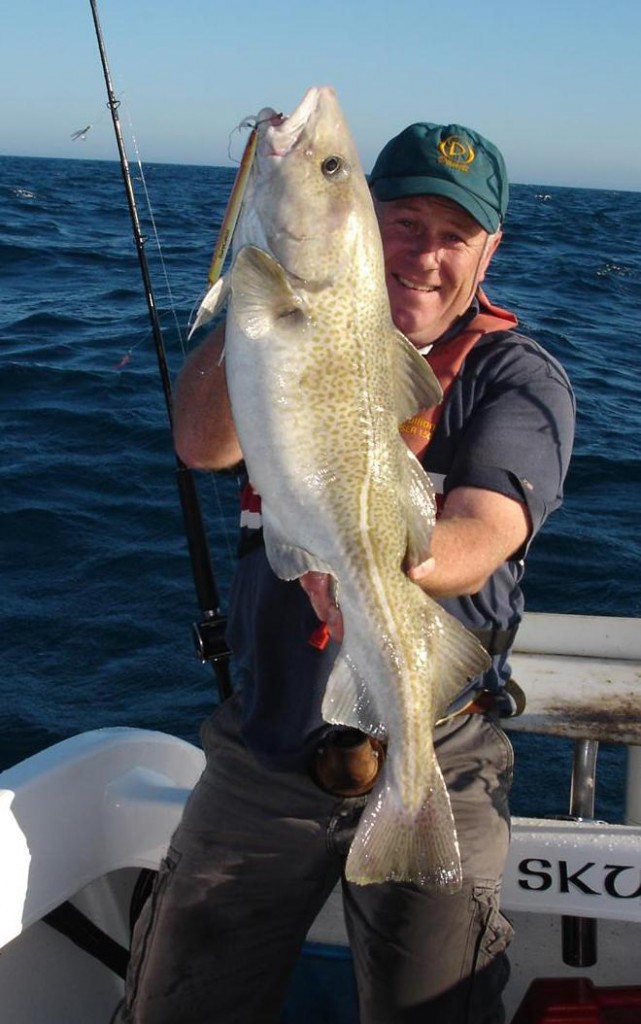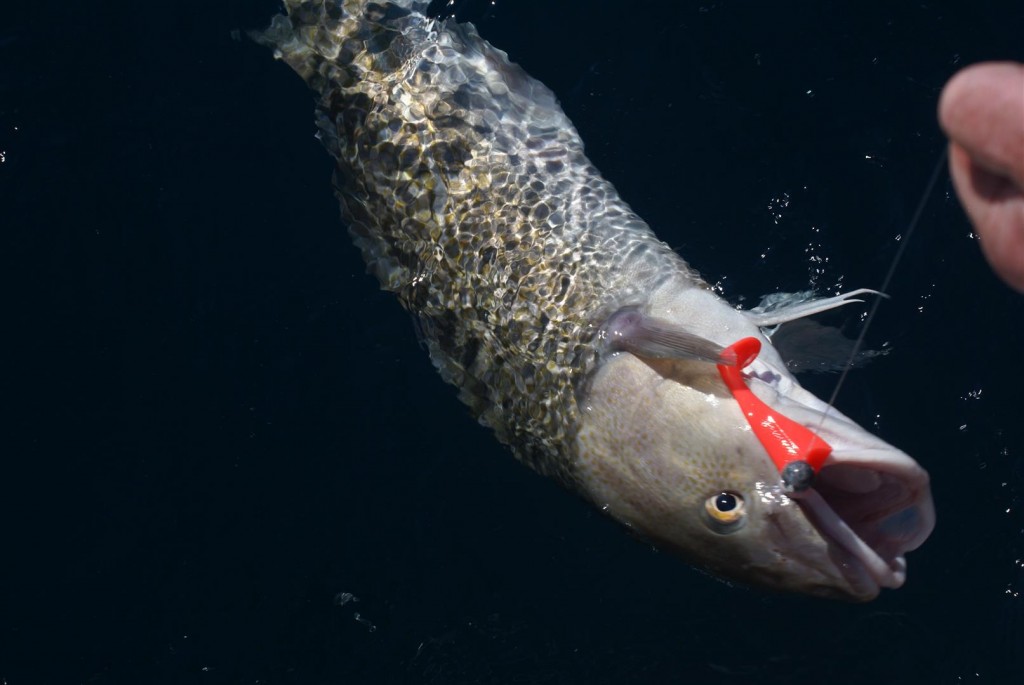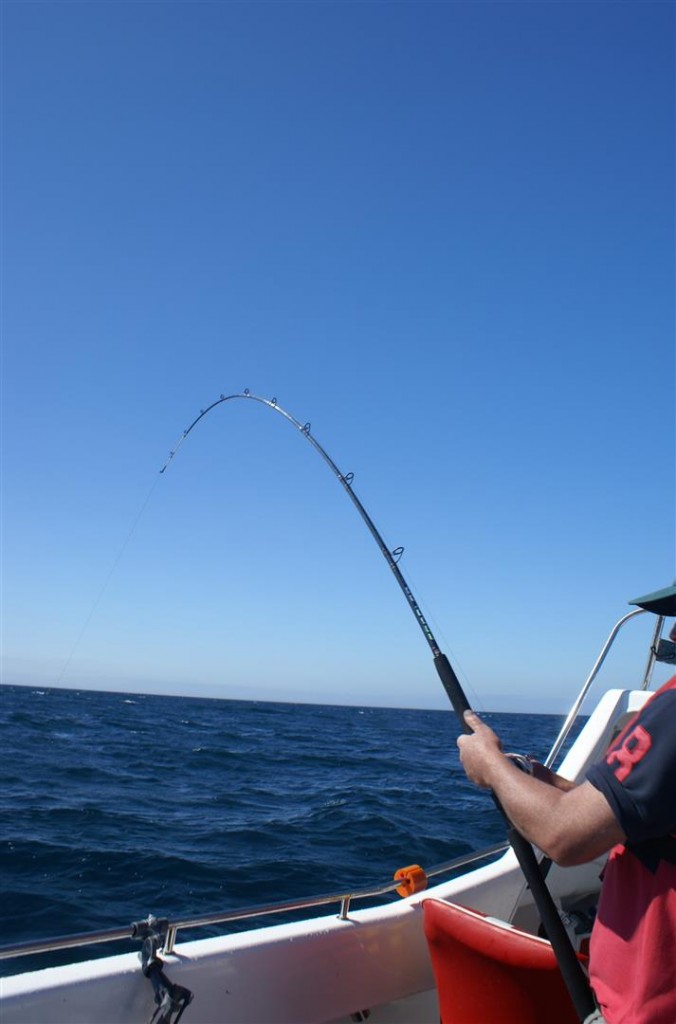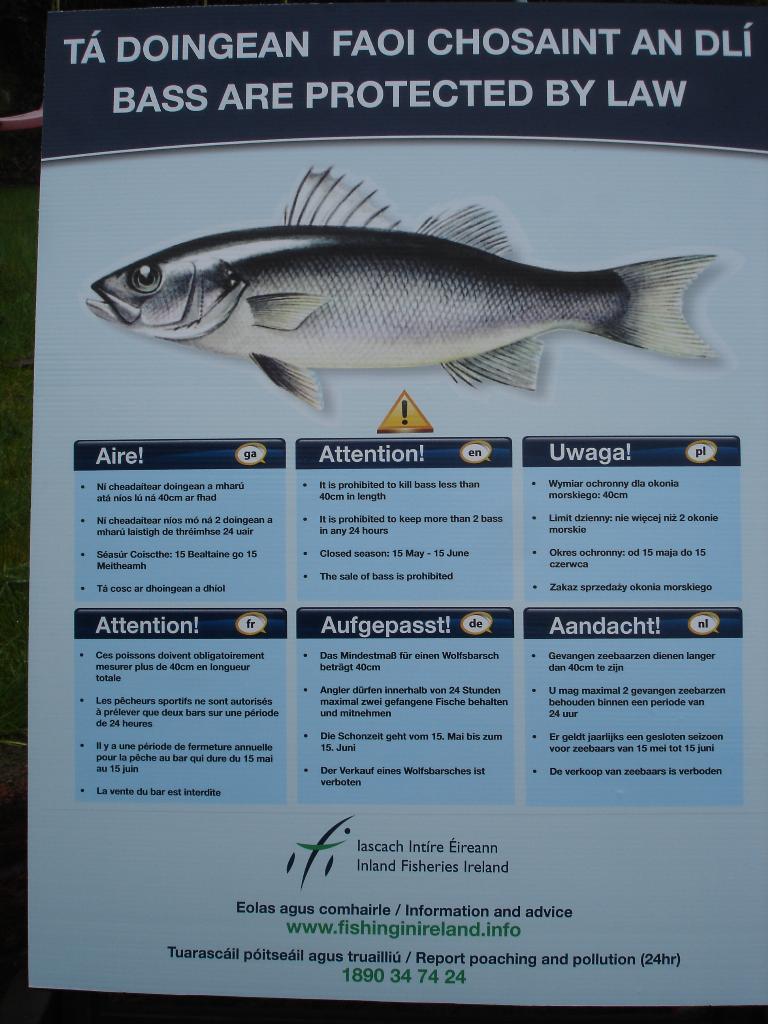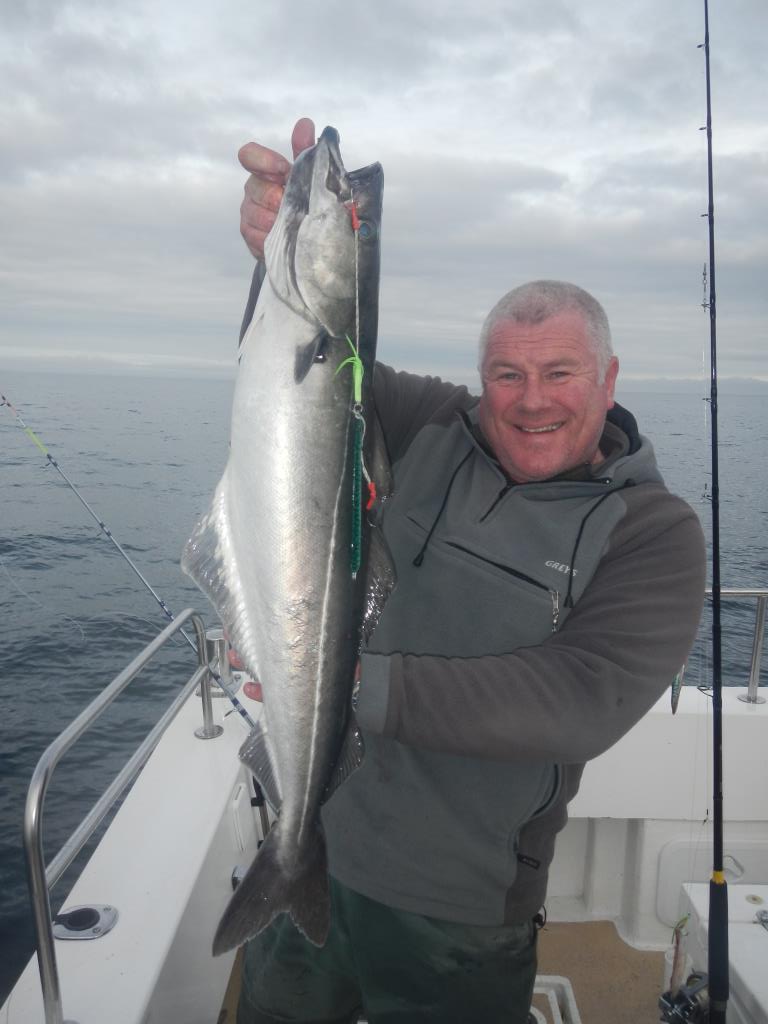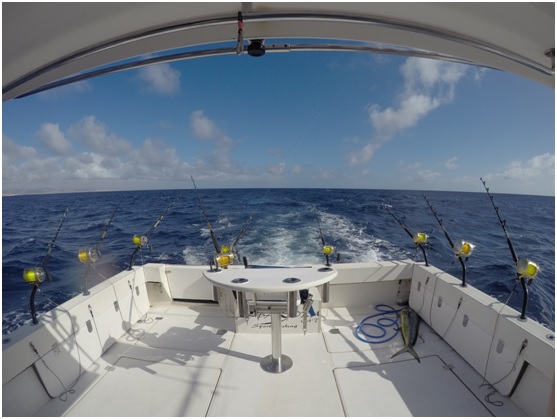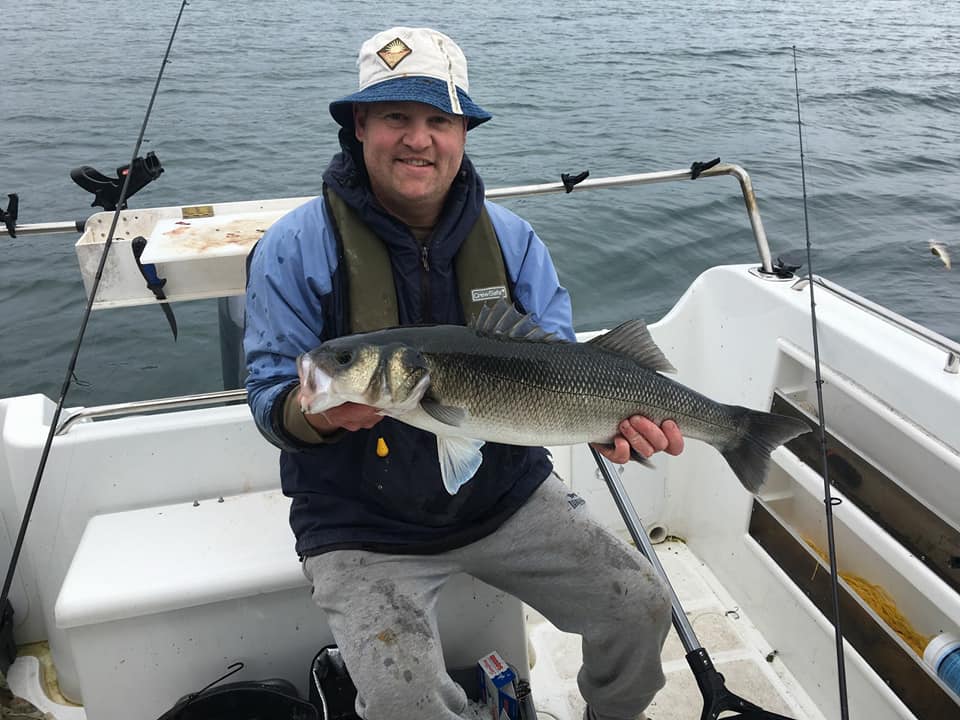*The Best Laid Plans: Wrecked! (2008)
Some nice Wreck fishing with jigs – A throwback to 2008 and Irish Angler Magazine
“Jim Clohessy plans an article on mackerel… It doesn’t work out this month, they are not complaining!
There is a process that we go through each month when we approach time to submit our Dinghy Angler articles: We try to cover areas that we either have never covered before or we try to give a fresh slant on proven techniques and tackle. This month things were a little different. We began to set about proving that a dinghy angler can have plenty sport without spending a fortune on tackle and bait. In other words that shop bought traces and fresh mackerel baits would catch the majority of common species. The facts are simple, summer time is here and there should be an abundance of fresh mackerel around.
Our first trip out to prove the theory proved difficult as there were no mackerel around! We had brought some frozen fish with us but we felt that using this was a bit defeatist, that and the fact that there is little to top fresh bait for catching fish. Our timing was correct as there was plenty mackerel around the previous few trips but the arrival of a period of sustained east winds seemed to put every fish in the sea off biting, mackerel included.
We hope this months article gives you some encouragement on the day you are struggling to catch bait, all is not lost, just make sure you have plenty of rubber, metal and plastic on board. That first trip we searched for at least an hour. Often we put the engine in gear and cover more ground by ticking over at a knot or two. A light rod and a set of sabikis or shrimp rigs can be flicked ahead of the boat and hopefully you will get a take on the drop as the boat catches up with your gear. When searching out fish in this fashion we always vary our rigs. We will only both use the same rig once we determine which the mackerel prefer on the day. If one starts on sabikis then the other will start on hockeyes. Shrimp rigs and sabikis are too similar in size so one of us will use a larger rig. If the water is coloured a bigger will usually do better. Despite our best efforts that day we failed to catch a solitary mackerel! This is the reason behind this month’s article on baitless fishing!
We are never ones to drift aimlessly around in search of fish. Fish like features so it is here we set out our stall in order to get our sport. There are some species that respond better to lures than others; pollack are the most common and the easiest to tackle. In my eyes there is only one way to fish for pollack: one hook, one lure, one fish. I have no problem in locating fish with hockeyes but as soon as we determine there are fish around its back to light gear and single hooks. Most anglers agree that a single hook rig on light tackle offers the best sport available. In most parts of the sea around our coasts where there are reefs there are pollack. Summer time sees an abundance of fish arriving inshore. The lures that will catch pollack are many and varied: shads, jelly worms, imitation rag worms, redgills and variations, shads and of course jigs.

I must say I get a particular buzz from jigging. It is a technique that provides action all the way. From the moment you flick the jig over the side feel it touch the bottom, maybe getting a hit on the way down, to the speedy retrieve its is fun all the way. The modern jigs are expensive but when used only with assist hooks mounted at the top of the jig rather than the traditional end mounted hooks the chances of snagging the bottom are greatly reduced. On that first trip we drifted over and back over a nice reef and had a pollack each on each drift. John varied from using shads to using jelly worms while I stuck with my favourite Surecatch Stinger 150 gram jigs in various styles. The pollack seemed to prefer either mackerel pattern or lumi jigs whereas John did the most damage using five inch shads in a lumi colour. Either way the day could have been a write off; instead we had rescued our day went home happy enough and ready to try our original plan at the next opportunity.
We spent most of the next few weeks on dry land. The east winds seemed to be incessant and there is nothing like it to put fish to ground. We kept in touch with other local anglers and internet catch reports to see if there was much happening. At last the wind veered around to more normal directions and we were back to planning our “mackerel bait” article. The next weather window crept up on us. While conditions looked good enough for inshore fishing there was a distinct possibility of a foray to the offshore wrecks. We watched and waited, we watched some more and eventually it looked good enough. Should we stick with the plan or would we head offshore? The offshore wrecks did not fish well for us last year. Well to be fair to the wrecks they were not allowed to. Regular readers will remember our frustration at the netting that went on all through the summer months and well into autumn. There is much in the news of cod quotas biting hard on the south coast and so maybe our friendly netter might be unable to net the wrecks at the moment. We decided it was worth the gamble and we would head offshore.
We cruised to the position at twenty four knots. The conditions were ideal, there was some debate as to how the day would end up weather wise. We are not known for being light with the throttle hand but as fuel prices rise above one thirty a litre we have decided to pay more attention to our economy. I must say it makes for a more comfortable trip. Our fuel meter is reading .9 nautical miles per litre as we leave the Old Head of Kinsale in our wake. We did stop to catch some mackerel. I know this is a baitless article but it would be foolhardy to head out long distances without some bait in reserve should things go belly up. If things go well on the wrecks there is a good chance the mackerel will end up on the barbecue rather than on an 8/0!
In a little over an hour we approach our wreck with some trepidation, would there be the dreaded buoys near the position. We had put down too many trips last year only to find most of the wrecks in the area netted. It really shook our faith in wrecking. In fact we determined we would not fish these wrecks in future but we would head further west to some wrecks that we have never fished before. When there were no buoys around it was impossible to resist the opportunity, we just had to wet a line.
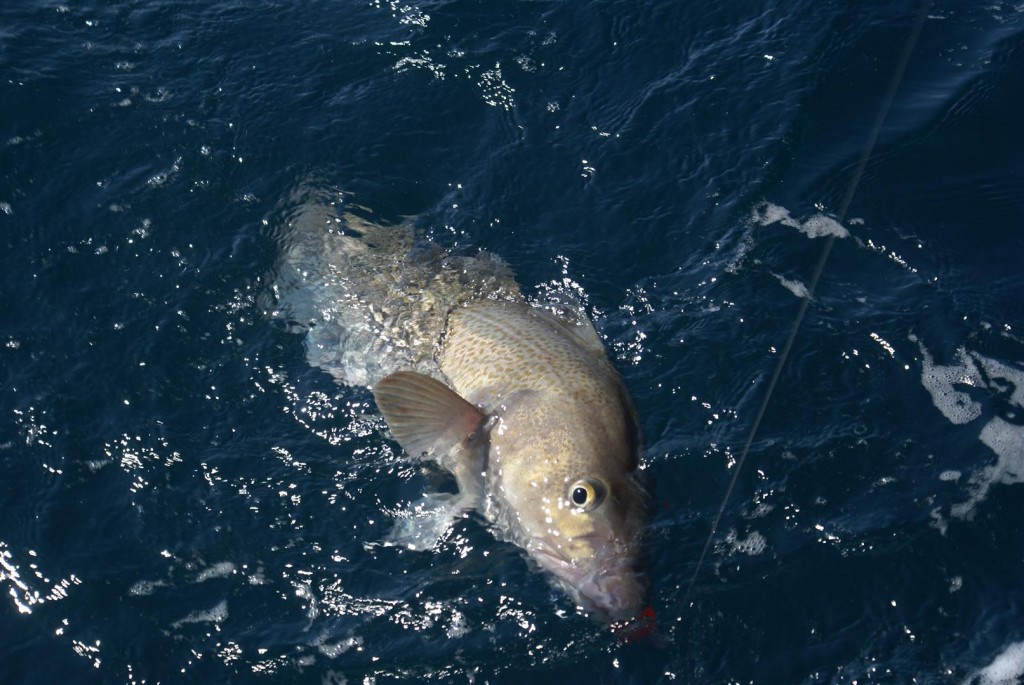
Shadding and jigging are disciplines that require some drift to be successful. We find that in slack conditions the shad must not swim well or the line can get tangled more often. Conditions today are perfect! John is happy that there is just enough drift that eight ounces of lead is enough to get to the bottom. This is an ideal sized weight to get the best out of our gear. I have my trusty Solid C 10-20lb mated with a reel more commonly seen on the beaches across the country, a Penn 525 Super Mag. John, after having some difficulties with his trusty Abu Suveran and still waiting for a replacement, is using a backup Abu Conlon 12-20. The combination of the rod and Avet reel looks the part though John is not overly impressed. The rod is more beefy than the 12-20lb tag would suggest. While John tackles up with a big shad on a two ounce leadhead I opt for a 300 gram Stinger jig. The Solid C is marked with a jig class of 120 grams but the rod copes easily with the 300 gram orange mackerel pattern.
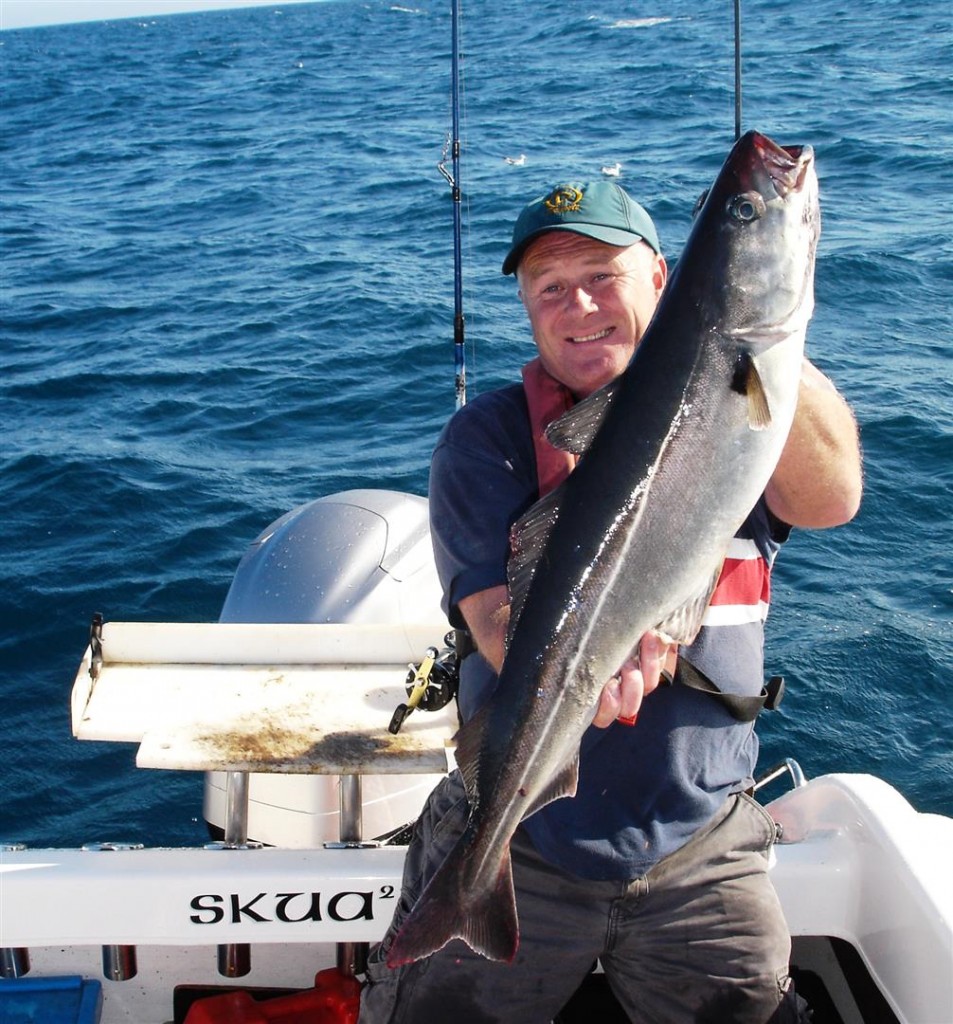
Jig fishing is effortless on the descent. Shadding takes a little more care as dropping too fast can lead to tangles. My jig is mounted on a short biting leader of one hundred pound mono and as there is nothing to tangle and the jig is very streamlined I hit the bottom well before John. I begin my retrieve and after twenty turns the rod tip stops dead. I strike and bend the bottom section of the rod into a decent fish. I look to my right and see John doing something similar with his Conlon. I get a cracking fight from a cod that touches the scale at sixteen pounds. It is certainly my best cod this year and I must say the buzz of the fight from three hundred and fifty feet down has my knees trembling. All the poor days of last year are forgotten in an instant!
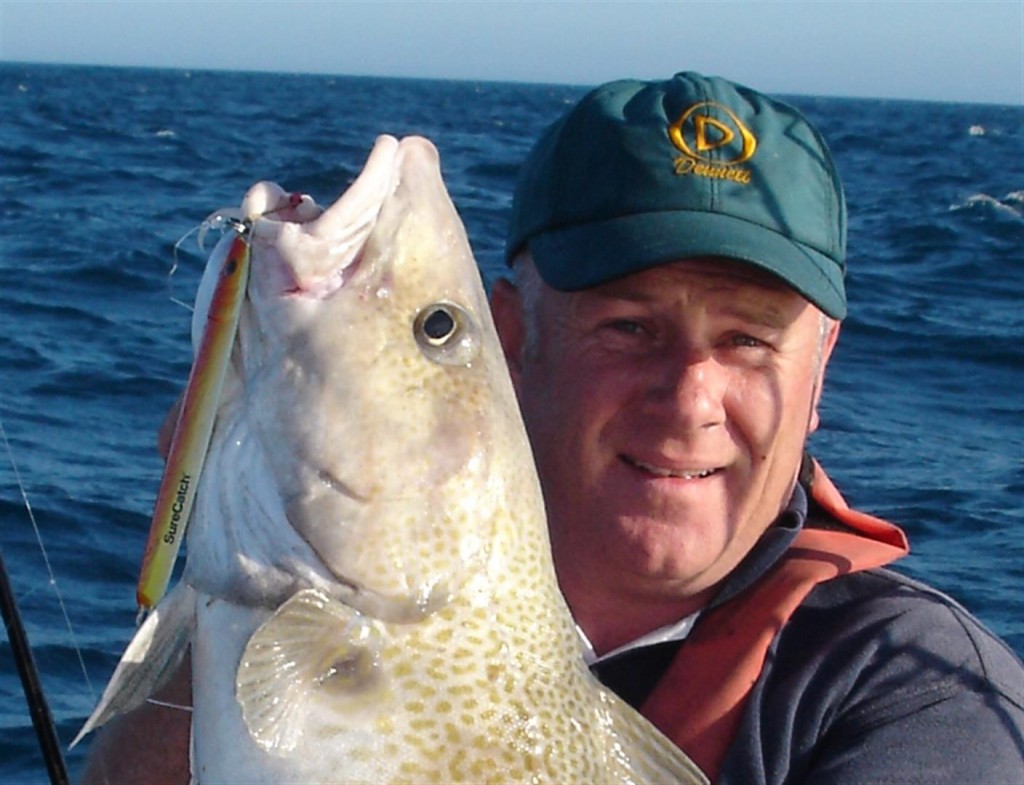
We finish each drift a couple of hundred yards downtide of the wreck. When targeting cod it is best to work the lure close to the bottom. Pollack and coalfish, if around, will be further up the water column, up to one hundred turns further up in “shad speak”. While retrieving on a drift where we get no fish I get a snatch high up. A glance to the sounder shows the tell tale red bars that we now know to be lurking coalfish. The drift has increased enough that my Stinger is struggling. The biggest size I have are 300 gram. They also come in 350 gram and I will have to pick up a few in this weight. In fairness the amount of times that the 300 will not suit are few and far between but I have no option to switch to shadding gear for the next drift. John is working the bottom and is picking off cod every other drop. There are no monsters there but it is early in the season for this type of fishing and it is encouraging to see them here at all. I try a different colour shad to John’s pink and I decide to retrieve higher than he is doing. I am rewarded on the first drift with a blistering from a coalfish into double figures. On the next drift I get my best fight of the day from a coalie that looks to be over the magic fifteen pounds. The fight is not the usual blistering runs you expect from a coalie of this size but rather it is a dogged affair with the fish attempting to head for the wreck in short lunges I thought first that I had hooked a cod that had lost its way! I would imagine if we are lucky enough to get a few coalies later in the summer after they have been feeding a while the fight will be the more familiar fight where all hell breaks loose. On some drifts we are both into fish, either nice cod, none in single figures weight wise or coalies all between ten and fifteen pounds. We put in a great many drifts stopping only to transfer fuel from a spare jerry can to the main tank. We did with this with our “super siphon” hose. I had never seen one of these before until given one by a buddy. It is a brilliant and safe piece of kit for anyone who transfers fuel at sea.
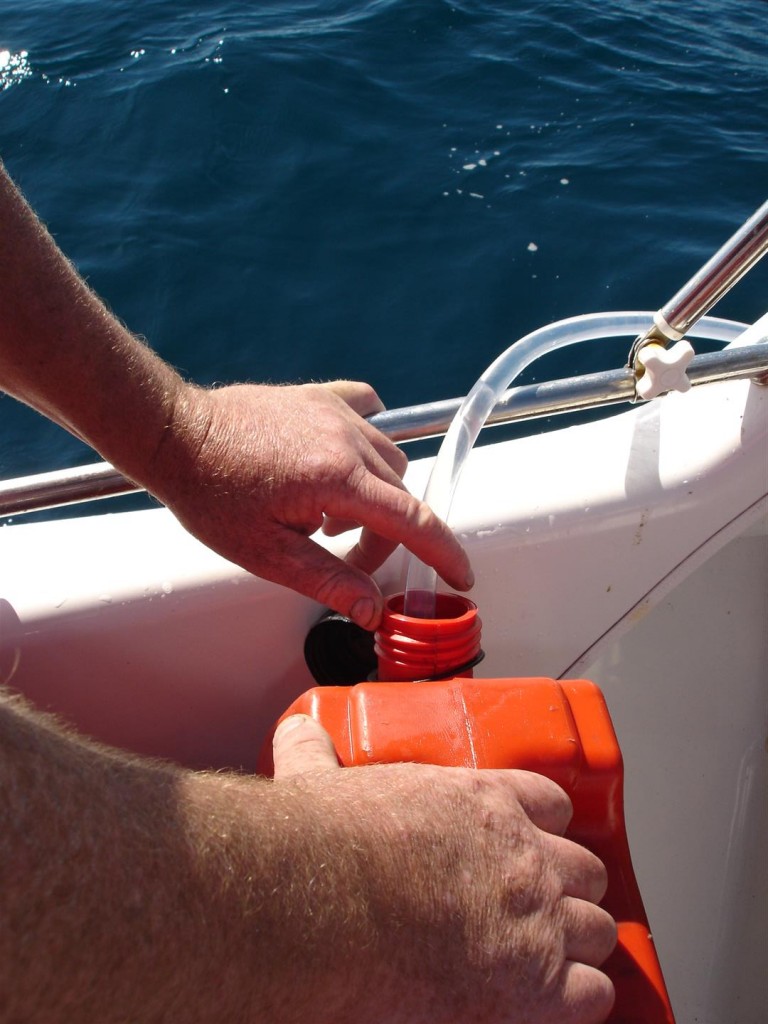
We had headed to sea around lunch time. Our plan was to fish until eight o’clock and after lines up head for home. We actually had to head off sooner as by now the wind had picked up considerably and we faced an extended run time back to shore. While the increase in wind speed was forecast it was not meant to be nearly as strong. It was just as well we left early as the spin home took almost two hours such were the nature of the conditions. The first hour got the adrenalin flowing but the second was a drudge and left us both knackered when we hit the slip. Knackered as we were one look at some of the fish we kept made the whole trip worth while. Our biggest coalfish hit the scales at fifteen pounds a super fish by any standards. Our day was a successful one and we used no bait. I know that wreck fishing is a specialised game but there are plenty reef marks that will throw up good sport. As a small boat skipper you must never give up, there is always something else to try before heading for home.

Hopefully next month we will get around to finishing the mackerel bait article. These are strange times though and there are no guarantees. As I write this piece Cork Harbour is blockaded by angry fishermen who are complaining about rising fuel prices, small quotas leading to the dumping of bycatch, the importation of cheaper fish from countries like Iceland and the contention that the Sea Fisheries Protection Authority (SPFA) are treating them like criminals. The rising cost of fuel is affecting all areas of the economy and it would help if the Government would help out. When I hear about the dumping of bycatch I think about how little the general public know about the fishing industry. Imagine if farmers told us that if we wanted beef they would have to kill every other animal in the fields as well, rabbits, badgers even the occasional sheep! There would be uproar! I do not want to be simplistic or facetious but it is clear that fishermen must look to improving techniques in order to reduce bycatch. The quota system is not perfect but if it is ignored or diluted there will be nothing left to catch within a few short years. The SPFA are the body tasked with protecting our fish stocks and ensuring that fishermen fish within the rules. The rules may not be perfect but they must be followed. How can they be treating fishermen like criminals because they enforce the governments will? Land based companies face rules and regulations each day they open their doors to trade; this is a fact of life. If a company fails to profit then they go out of business, no buy outs, no compensation just another statistic. These are strange times indeed. Yet you have to feel for the commercial skipper. Their industry has been sold out to the EU; we have paid for the road building money in fish times over. Technology ensures that a smaller fleet will catch as much or more fish.
